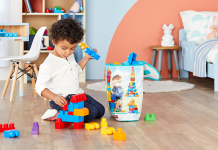In this day and age, taking a selfie is as natural as making yourself a sandwich. Even with kids.
But, are you, and especially your children, awards of the risks that may come with sharing selfies?
Thanks to Carey van Vlaanderen from CEO at ESET South Africa, here’s what you need to know, and teach your kids, before they hold their smartphone at arm’s length (or enlist the help of a selfie stick) and share a photo with the online world. In fact, remember that even sending a picture privately may result in unintended consequences, as once it’s shared, you have no control of what happens to it.
Risks
Tech-savvy cybercriminals can glean enough information from a photo, and your child or their pals needn’t even make any revealing comments after the image goes public.
For one thing, if the phone has a geolocation enabled, your child may be giving away his or her whereabouts, since the current location is saved and shared along with the photo. Combined with other seemingly innocuous details from the image or the child’s social media profile, this can be misused by ill-intentioned individuals.
Also, even if the geolocation is disabled, small details in the background, such as street names or landmarks, may reveal sensitive information.
There are also hazards, such as cyberbullying, that may unfold within the confines of the online world, but with effects that can be far too palpable. A child who appears in an image in a potentially embarrassing pose or situation – without necessarily posting it themselves – can become a target for (cyber)bullies at school and around the world.
So, what are some easy ways to help instil safe selfie habits in your kids?
Get involved
The single most important things is to get involved, although this doesn’t (necessarily) mean putting your foot down. Instead, explain to your children why privacy matters and help them set up privacy settings safely throughout their social media profiles, and review the settings on a regular basis.
When it comes to selfies, show your children how to go over the images with a fine-toothed comb. Teach them about the risks of the internet and especially of social media sharing, ensuring that they are aware of the kinds of situations that may put them and others at risk.
Walk the talk
The “Do as I say, not as I do!” admonition is unlikely to work. Let’s face it: Words alone may not bring the desired outcome unless they’re supported by actions. Since children are more likely to do what their elders do rather than what they say, you will need to become a role model.
In other words, if you can’t resist the urge to post portraits of yourself and your family or friends, you cannot expect your children to behave differently. Naturally the same goes for excessive sharing of personal information on social sites.
Trust but verify
At the end of the day, it’s important to have an understanding of what kids are up to online. There are dedicated and reputable apps that give you some control over children’s devices and their online activities, so that you can help them stay away from trouble. In a nutshell, parental control features can filter and block age-inappropriate content, restrict what kind of information is shared, and keep tabs on kids’ screen times. They can also keep activity logs, giving you an insight into what kind of online content your children have accessed.
At any rate, remember to stay engaged with your kids and keep all lines of communication open. Just like in other areas of life, education and communication are vital to preventing trouble.






